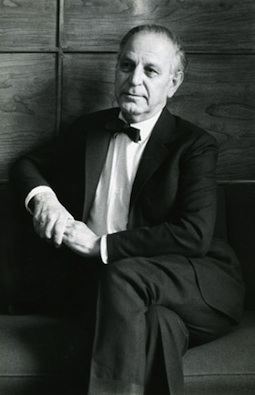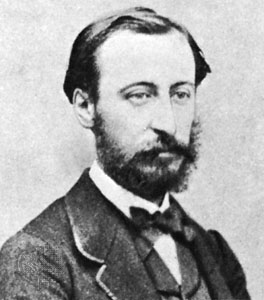Related Research Articles

The Piano Concerto in A minor, Op. 16, composed by Edvard Grieg in 1868, was the only concerto Grieg completed. It is one of his most popular works and is among the most popular of the genre.
Dmitri Shostakovich's String Quartet No. 8 in C minor, Op. 110, was written in three days.

Amy Marcy Cheney Beach was an American composer and pianist. She was the first successful American female composer of large-scale art music. Her "Gaelic" Symphony, premiered by the Boston Symphony Orchestra in 1896, was the first symphony composed and published by an American woman. She was one of the first American composers to succeed without the benefit of European training, and one of the most respected and acclaimed American composers of her era. As a pianist, she was acclaimed for concerts she gave featuring her own music in the United States and in Germany.
Sergei Prokofiev began his Violin Concerto No. 1 in D major, Op. 19, as a concertino in 1915 but soon abandoned it to work on his opera The Gambler. He returned to the concerto in the summer of 1917. It premiered on October 18, 1923 at the Paris Opera with Marcel Darrieux playing the violin part and the Paris Opera Orchestra conducted by Serge Koussevitzky. Igor Stravinsky made his debut as conductor at the same concert, conducting the first performance of his own Octet for Wind Instruments.

Ulvi Cemal Erkin was a member of the pioneer group of symphonic composers in Turkey, born in the period 1904–1910, who later came to be called The Turkish Five. These composers set out the direction of music in the newly established Turkish Republic. These composers distinguished themselves with their use of Turkish folk music and modal elements in an entirely Western symphonic style.

The Piano Concerto No. 4 in C minor, Op. 44 was composed by Camille Saint-Saëns in 1875. It was premièred on October 31, 1875, at the Théâtre du Châtelet of Paris, with the composer as the soloist. The concerto is dedicated to Anton Door, a professor of piano at the Vienna Conservatory. It continues to be one of Saint-Saëns' most popular piano concertos, second only to the Piano Concerto No. 2 in G minor.

The Symphony No. 2 in E minor, Op. 27 by Russian composer Sergei Rachmaninoff was written from October 1906 to April 1907. The premiere was performed at the Mariinsky Theatre in Saint Petersburg on 26 January 1908, with the composer conducting. Its duration is approximately 60 minutes when performed uncut; cut performances can be as short as 35 minutes. The score is dedicated to Sergei Taneyev, a Russian composer, teacher, theorist, author, and pupil of Pyotr Ilyich Tchaikovsky. The piece remains one of the composer's most popular and best known compositions.
The Concerto in C minor for Piano, Trumpet, and String Orchestra, Op. 35, was completed by Dmitri Shostakovich in 1933.
The Suite for Cello and Piano, Op. 16, was written by Camille Saint-Saëns in 1866. This work is considered the launching point of the composer's career.

La stravaganza [literally 'Extravagance'], Op. 4, is a set of concertos written by Antonio Vivaldi in 1712–1713. The set was first published in 1716 in Amsterdam and was dedicated to Venetian nobleman Vettor Delfino, who had been a violin student of Vivaldi's. All of the concertos are scored for solo violin, strings, and basso continuo; however, some movements require extra soloists.
An organ concerto is a piece of music, an instrumental concerto for a pipe organ soloist with an orchestra. The form first evolved in the 18th century, when composers including Antonio Vivaldi, George Frideric Handel and Johann Sebastian Bach wrote organ concertos with small orchestras, and with solo parts which rarely call for the organ pedal board. During the Classical period the organ concerto became popular in many places, especially in Bavaria, Austria and Bohemia, reaching a position of being almost an integral part of the church music tradition of jubilus character. From the Romantic era fewer works are known. Finally, there are some 20th- and 21st-century examples, of which the concerto by Francis Poulenc has entered the basic repertoire, and is quite frequently played.
The Piano Concerto in C is a concertante work by Ralph Vaughan Williams written in 1926 and 1930-31. During the intervening years, the composer completed Job: A Masque for Dancing and began work on his Fourth Symphony. The concerto shares some thematic characteristics with these works, as well as some of their drama and turbulence.
Gaelic Symphony or Symphony in E minor, Op. 32 was written by Amy Marcy Cheney Beach in 1894; it was the first symphony composed and published by a female American composer. The piece debuted in Boston on Friday, October 30, 1896 to "public and journalistic acclaim." Beach drew inspiration for the large orchestral work from simple old English, Irish, and Scottish melodies; thus, she subtitled the work 'Gaelic.'
The Guitar Concerto No. 1, Op. 325, is a concerto for classical guitar and orchestra by the American composer Alan Hovhaness. The work was commissioned by the SRO Production Performing Artist Management and the Minnesota Orchestra for the guitarist Javier Calderon in July 1978. It was completed January 21, 1979, and was premiered later that summer by Calderon and the Minnesota Orchestra under conductor Leonard Slatkin.
The Concerto for Piano and Orchestra is a piano concerto by the American composer John Corigliano. The work was commissioned by the San Antonio Symphony and was first performed on April 7, 1968 by the pianist Hilde Somer and the San Antonio Symphony under the direction of Victor Alessandro. The piece is dedicated to John Atkins.
The Symphony No. 3 is a composition for orchestra by the American composer Ned Rorem. The work was first performed by the New York Philharmonic under the direction of Leonard Bernstein at Carnegie Hall on April 16, 1959.
The Piano Concerto No. 2 in D minor, Op. 23 by Edward MacDowell was completed in late 1885. Although some obvious similarities with Edvard Grieg's, Camille Saint-Saëns's and Franz Liszt's concertos have often been stated, MacDowell’s composition proves to be quite original, at least compared to his First Concerto. It was the first major piano concerto written by an American. It was also the only large-scale composition by MacDowell to remain in standard repertoire.
References
- 1 2 3 Block, Adrienne Fried (2003). Beach: Piano Concerto / 'Gaelic' Symphony (CD liner). Naxos Records . Retrieved January 9, 2016.
- ↑ Sletcher, Michael (January 1, 2004). New England: The Greenwood encyclopedia of American regional cultures. Greenwood Publishing Group. p. 337. ISBN 9780313327537.
- 1 2 Greenfield, Phil (October 7, 1994). "Beach's piano concerto will take center stage". The Baltimore Sun . Retrieved January 9, 2016.
- ↑ Block, 1998, p. 144
- ↑ Block 1998, p. 145
- ↑ Kosman, Joshua (March 27, 2000). "Thwarted Composer's Intense Work". San Francisco Chronicle . Retrieved January 9, 2016.
- ↑ Achenbach, Andrew (June 2003). "Beach Piano concerto; Symphony No 2: One of the most valuable releases yet in Naxos's American Classics series". Gramophone . Retrieved January 9, 2016.